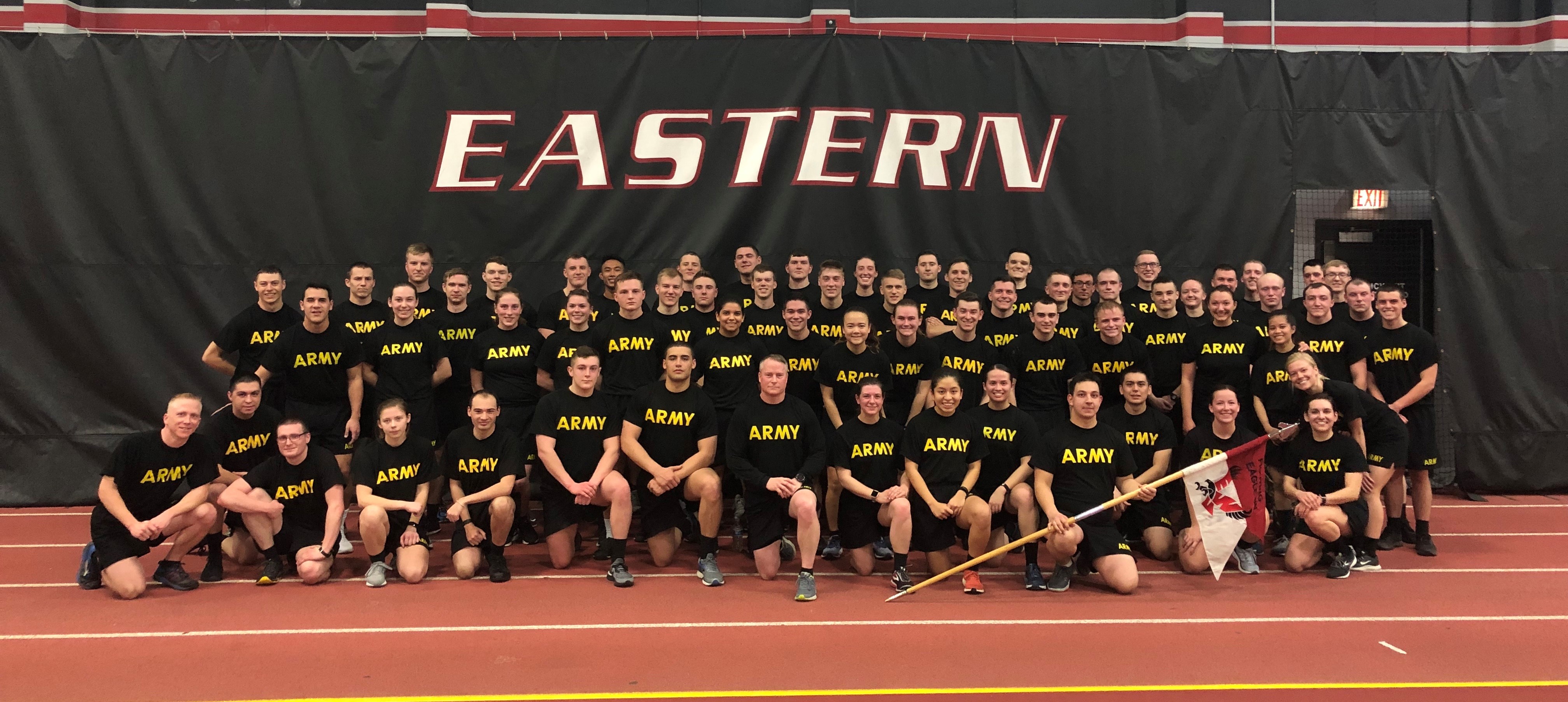Physical Training
The Eastern Washington University (EWU) ROTC “Fighting Eagles” Battalion had the honor of hosting the 8th ROTC Brigade Command Sergeant Major, CSM Mark Cashman. As the senior non-commissioned officer (NCO) in the 8th ROTC Brigade, CSM Cashman is responsible for providing mentorship to the brigade’s NCOs and Cadets in 30 different ROTC battalions in the western United States, Alaska, Hawaii, and Guam. Being a career Infantryman, CSM Cashman looked forward to starting his day by doing early morning physical training (PT) with the Fighting Eagles Cadets in the EWU Fieldhouse. CSM Cashman showed the Cadets what true leadership is by putting in hard work at PT and then hosting a question and answer session with the Cadets afterwards.
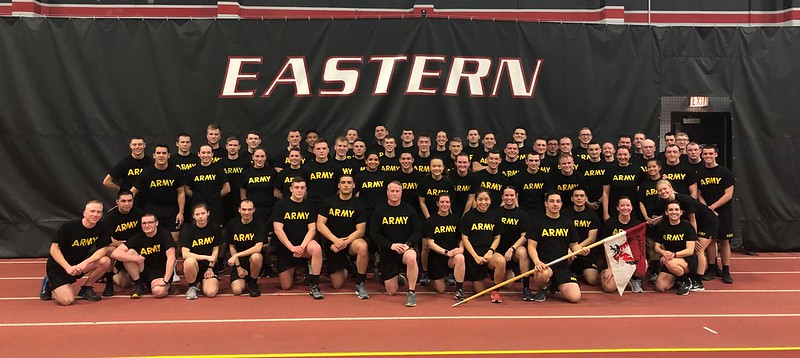
CSM Mark Cashman (center) conducted physical training with the EWU ROTC “Fighting Eagle” Cadets.
Campus Visit
Later that morning, CSM Cashman met with one of our great ROTC partners on campus, the Dean of the College of Social Sciences (CSS), Dr. Jonathan Anderson. Dr. Anderson was presented with a 8th ROTC Brigade coin by CSM Cashman due to the support he has provided the university’s ROTC program over the years. The visit with Dean Anderson also allowed CSM Cashman an opportunity to see the beautiful EWU campus.

8th ROTC Brigade Coin
Leadership Lab
Later that day CSM Cashman was able to sit in on a class with the MS-III (3rd year) Cadets, attend a luncheon with a sub-set of Cadets from the battalion, followed by attending the weekly leadership laboratory at John F. Kennedy (JFK) Field. During the lab the Cadets trained on how to conduct what the Army calls “special teams”. The special teams lab taught the Cadets how to execute aid and litter, perform Enemy Prisoner of War (EPW) procedures, and conducting site exploitation.
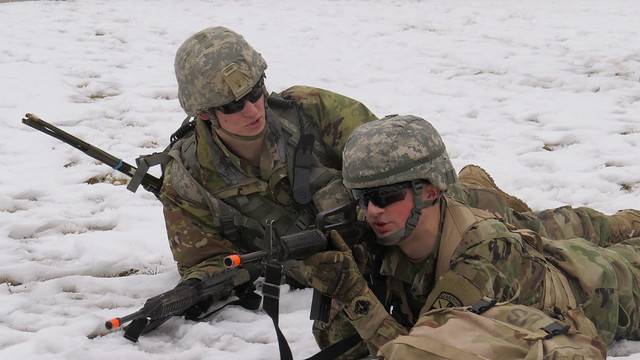
EWU ROTC Cadets Collin Galbreath (left) and Ian House (right) participate Special Teams training.
At first formation, the officer in charge of the training, Cadet Tyler Roylance briefed the unit on what they will be conducting during the lab. After the brief the Cadets split up in their respective platoons and went to their assigned stations. At each station there were two senior Cadets to demonstrate what they will be doing at their station. This allowed the more junior Cadets an opportunity to see what the performance standards were for the station and how the training should look if properly executed. Every cadet was given the performance measures a week prior to lab so they were able to train on their own in preparation for the lab.

EWU ROTC Cadets participate in the weekly leadership lab training.
The first station conducted was aid and litter training. At this station Cadets had to conduct life saving measures on a simulated casualty that had fallen in combat. They had to treat the casualty’s injures so they could be moved to safer location and be evacuated to a simulated helicopter MEDEVAC (Medical Evacuation). Once the casualty was moved to a different location the Cadets had to call up a MEDEVAC order known as a 9-Line, which they had learned at the prior week’s lab. The next station was EPW training, where Cadets learned how to search captured enemy combatants. The training focused on how to search the person for any information they may have on them, while making sure they had 360 degree security so that they were not in any immediate danger.
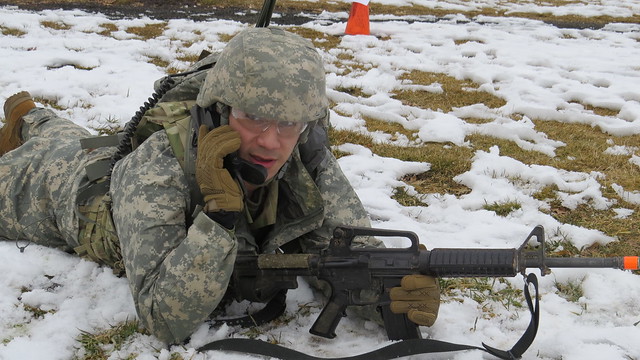
Cadet Marcos Sanchez communicates a medical evacuation during the weekly leadership lab.
The final station was site exploitation. This station was where Cadets were trained on how to look for vital information and enemy equipment on the objective after they had secured the area. This trained Cadets to thoroughly search for any sensitive information or equipment such as maps, explosives, etc. The training is important because it teaches the Cadets how to handle these sensitive items and properly report it up the chain of command in case it could be useful for future operations. Overall the lab’s training allowed Cadets to better their skills in special teams, which is always used after any engagement they encounter in squad operations.
Award Ceremony
After the conclusion of the lab a short award ceremony was held to recognize some of the battalion’s outstanding Cadets. First the top two squad leaders from the leadership lab training were recognized with a commander’s coin from the EWU ROTC Professor of Military Science Lieutenant Colonel (LTC) Jonathan Stafford. Cadets Hunter Smith and Christian Goldbach received the highest total scores from the evaluators located at each station and were this week’s “Heroes of the Lab”.
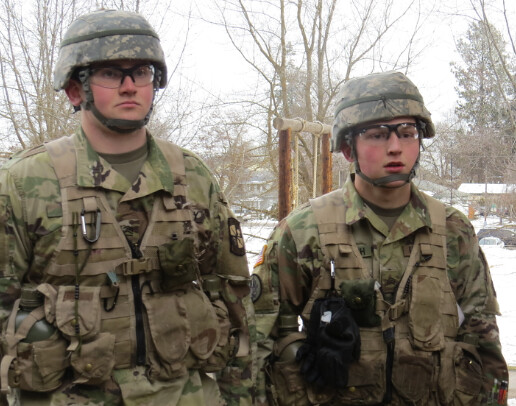
Cadets Hunter Smith (left) and Christian Goldback (right).
Additionally during the award ceremony CSM Cashman recognized three high achieving Cadets with an 8th ROTC Brigade coin. The recipients were Madelynn Woodland who is a highly motivated first year Cadet, Jameson Palmer who is a third year Cadet who has been doing a phenomenal job as the Fighting Eagles First Sergeant, and fourth year Cadet Megan Anderson who has excelled at managing the battalion’s training activities each week.
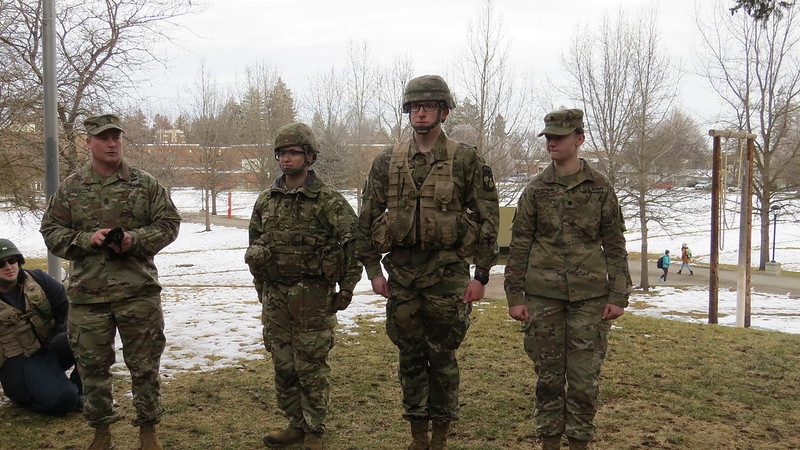
CSM Mark Cashman (far left) recognizes Cadets Madelynn Woodland (2nd from left), Jameson Palmer (center) and Megan Anderson (right).
EWU ROTC thanks CSM Cashman for taking the time to visit the great Cadets of the Fighting Eagles battalion. The Cadets had a fantastic day hosting and receiving mentorship from one of the most senior leaders in Cadet Command. Leaders make time for things that are important and visiting the brigade’s Cadets is a major priority for CSM Cashman.
Go ROTC! Go Fighting Eagles!
